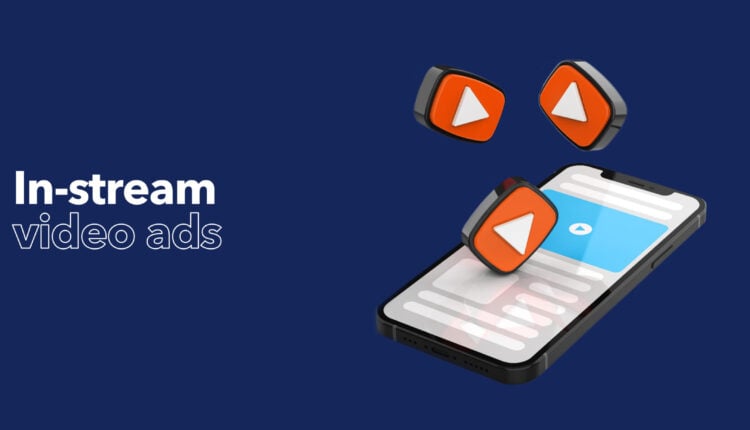In-stream video ads have become a prominent feature in digital advertising, offering a powerful way to reach audiences through video content. Whether you’re an advertiser looking to leverage this format or a marketer curious about its benefits, this guide will provide a clear overview of in-stream video ads, their types, advantages, and best practices.
What Are In-Stream Video Ads?
In-stream video ads are advertisements that appear within or alongside video content on platforms like YouTube, streaming services, and social media. These ads play before (pre-roll), during (mid-roll), or after (post-roll) the main video content. The primary goal is to engage viewers with relevant messaging while they watch their favorite videos.
In-stream video ads can be skippable or non-skippable, and they often include interactive elements to encourage viewer engagement. This format allows advertisers to deliver their message in a context where viewers are already focused on video content, potentially increasing the impact of the advertisement.
Types of In-Stream Video Ads
1. Pre-Roll Ads
Pre-roll ads are short video advertisements that play before the main video content. Viewers must watch these ads before they can access their desired video. Pre-roll ads can be skippable, meaning viewers can skip the ad after a few seconds, or non-skippable, requiring viewers to watch the entire ad before proceeding.
2. Mid-Roll Ads
Mid-roll ads are inserted into the middle of a video. These ads are typically longer than pre-roll ads and are designed to break up the video content. Mid-roll ads are less likely to be skipped compared to pre-roll ads, as they are strategically placed during a natural pause or transition in the content.
3. Post-Roll Ads
Post-roll ads play after the main video content has finished. These ads often appear as a call-to-action or a follow-up message. While they may not have the same immediate impact as pre-roll or mid-roll ads, post-roll ads can still effectively reach viewers as they conclude their viewing experience.
4. Overlay Ads
Overlay ads appear as semi-transparent banners or graphics that overlay the video content. These ads typically include a clickable link or interactive element. Overlay ads are less intrusive since they don’t interrupt the video playback, making them a more subtle way to engage viewers.
Benefits of In-Stream Video Ads
1. Increased Visibility
In-stream video ads are highly visible because they appear directly within the video content that viewers are already watching. This positioning ensures that the ad captures the viewer’s attention in a context where they are engaged with video content.
2. Targeted Advertising
In-stream video ads allow for precise targeting based on viewer demographics, interests, and behavior. Advertisers can reach specific audience segments more effectively, ensuring that their ads are seen by those most likely to be interested in their products or services.
3. Enhanced Engagement
Video ads are more engaging compared to static ads, as they combine visual and auditory elements. The dynamic nature of video content can capture viewers’ attention more effectively, leading to higher engagement rates and better recall of the advertisement.
4. Measurable Performance
In-stream video ads provide detailed performance metrics, such as view rates, click-through rates, and engagement levels. These metrics help advertisers assess the effectiveness of their campaigns, optimize their strategies, and make data-driven decisions.
Best Practices for In-Stream Video Ads
1. Create Compelling Content
To maximize the impact of in-stream video ads, focus on creating compelling and relevant content. Ensure that your ad has a clear and engaging message that resonates with your target audience. The first few seconds are crucial, so make sure to capture viewers’ attention quickly.
2. Optimize for Different Devices
Viewers access video content on various devices, including smartphones, tablets, and desktops. Optimize your in-stream video ads to ensure they look and perform well across different screen sizes and platforms. This includes ensuring that video quality is high and that any interactive elements function properly.
3. Keep It Short and Engaging
In-stream video ads, especially pre-roll ads, should be concise and engaging. Aim for a length that conveys your message effectively without overstaying its welcome. Shorter ads tend to perform better, especially if they are skippable, as they respect viewers’ time and preferences.
4. Include a Strong Call to Action
A clear call to action (CTA) is indeed essential in in-stream video ads. Whether it’s directing viewers to visit your website, sign up for a newsletter, or make a purchase, ensure that the CTA is prominent and compelling. Make it easy for viewers to take the next step after watching the ad.
5. Test and Analyze
Regularly test different versions of your instream video ads in order to see which performs best. Experiment with various formats, lengths, and messaging. Use the performance data provided by your ad platform to analyze the results and further make necessary adjustments to improve effectiveness.
Conclusion

In-stream video ads are indeed a powerful tool for advertisers looking to engage audiences with dynamic and targeted content. By understanding the different types of instream video ads, leveraging their benefits, and following best practices, you can create effective video advertising campaigns that capture attention, drive engagement, and achieve your marketing goals. As video continues to dominate digital media, mastering instream video ads will indeed be crucial for staying ahead in the competitive advertising landscape.
Frequently Asked Questions (FAQs)
1. What are in-stream video ads?
They are advertisements that appear within or alongside video content, such as before (pre-roll), during (mid-roll), or after (post-roll) the main video.
2. What are the benefits of using in-stream video ads?
They offer increased visibility, targeted advertising, enhanced engagement, and measurable performance, therefore making them effective for reaching and engaging viewers.
3. How long should they be?
Instream video ads should be concise as well as engaging. Aim for short durations, especially for pre-roll ads, to capture attention quickly and retain viewer interest.
4. How can I optimize them for better performance?
In order to optimize instream video ads, create compelling content, ensure compatibility across devices, include a strong call to action, and regularly test and analyze performance metrics.


